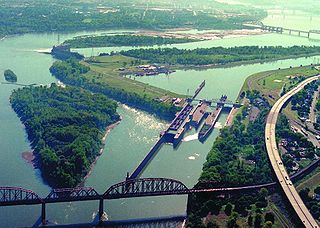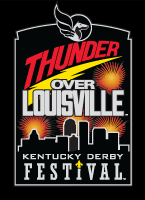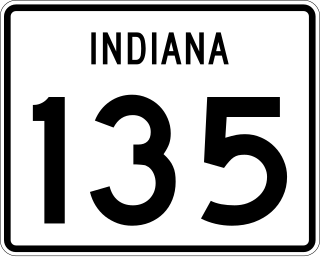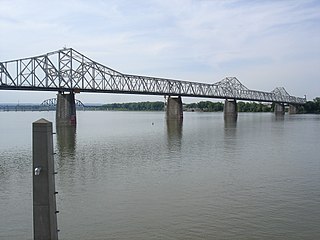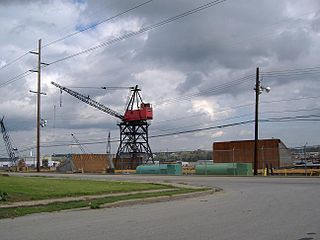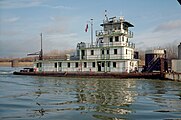Towboat Ben McCool upbound on Ohio River at Matthew E. Welsh Bridge with two tank barges (1 of 6), near Mauckport, Indiana, USA, 1987
Towboat Ben McCool upbound on Ohio River at Matthew E. Welsh Bridge with two tank barges (2 of 6), near Mauckport, Indiana, USA, 1987
Towboat Ben McCool upbound on Ohio River at Matthew E. Welsh Bridge with two tank barges (3 of 6), near Mauckport, Indiana, USA, 1987
Towboat Ben McCool upbound on Ohio River at Matthew E. Welsh Bridge with two tank barges (4 of 6), near Mauckport, Indiana, USA, 1987
Towboat Ben McCool upbound on Ohio River at Matthew E. Welsh Bridge with two tank barges (5 of 6), near Mauckport, Indiana, USA, 1987
Towboat Ben McCool upbound on Ohio River at Matthew E. Welsh Bridge with two tank barges (6 of 6), near Mauckport, Indiana, USA, 1987
Towboat Bruce Darst upbound on Ohio River at Clark Bridge, Louisville, Kentucky, USA, 2005
Towboat City of Pittsburgh upbound on Ohio River at Clark Bridge, Louisville, Kentucky, USA, 2005
Towboat Dakota Storm upbound on Ohio River at Matthew E. Welsh Bridge (1 of 4), near Mauckport, Indiana, USA, 1987
Towboat Dakota Storm upbound on Ohio River at Matthew E. Welsh Bridge (2 of 4), near Mauckport, Indiana, USA, 1987
Towboat Dakota Storm upbound on Ohio River at Matthew E. Welsh Bridge (3 of 4), near Mauckport, Indiana, USA, 1987
Towboat Dakota Storm upbound on Ohio River at Matthew E. Welsh Bridge (4 of 4), near Mauckport, Indiana, USA, 1987
Towboat Elizabeth Marie departing main lock at McAlpine Locks on Ohio River, Louisville, Kentucky, USA, 1999
Towboat Enid Dibert departing main lock at McAlpine Locks on Ohio River, Louisville, Kentucky, USA, 1999
Towboat Hugh C. Blaske upbound in Portland Canal on Ohio River (1 of 2), Louisville, Kentucky, USA, 1999
Towboat Hugh C. Blaske upbound in Portland Canal on Ohio River (2 of 2), Louisville, Kentucky, USA, 1999
Towboat James G. Hines upbound in Portland Canal on Ohio River (1 of 2), Louisville, Kentucky, USA, 1999
Towboat James G. Hines upbound in Portland Canal on Ohio River (2 of 2), Louisville, Kentucky, USA, 1999
Towboat Jerry E. Holbert upbound on Ohio River at Clark Bridge, Louisville, Kentucky, USA, 2005
Towboat Martha Mac upbound in Portland Canal on Ohio River (1 of 2), Louisville, Kentucky, USA, 1999
Towboat Martha Mac upbound in Portland Canal on Ohio River (2 of 2), Louisville, Kentucky, USA, 1999
Towboat Michael J. Grainger upbound in Portland Canal on Ohio River, Louisville, Kentucky, USA, 1998
Towboat R. W. Naye upbound in Portland Canal on Ohio River (1 of 2), Louisville, Kentucky, USA, 1999
Towboat R. W. Naye upbound in Portland Canal on Ohio River (2 of 2), Louisville, Kentucky, USA, 1999
Towboat Sue Chappell upbound in Portland Canal on Ohio River (1 of 4), Louisville, Kentucky, USA, 1998
Towboat Sue Chappell upbound in Portland Canal on Ohio River (2 of 4), Louisville, Kentucky, USA, 1998
Towboat Sue Chappell upbound in Portland Canal on Ohio River (3 of 4), Louisville, Kentucky, USA, 1998
Towboat Sue Chappell upbound in Portland Canal on Ohio River (4 of 4), Louisville, Kentucky, USA, 1998
Towboat V.W. Meythaler upbound at Clark Bridge (1 of 2), Louisville, Kentucky, USA, 1987
Towboat V.W. Meythaler upbound at Clark Bridge (2 of 2), Louisville, Kentucky, USA, 1987
Towboat Valvoline upbound with empty tank barges in Portland Canal, Louisville, Kentucky, USA, 1987
Towboat William Clark upbound in Portland Canal, Louisville, Kentucky, USA, 1998










